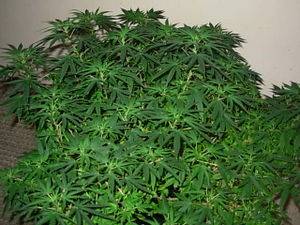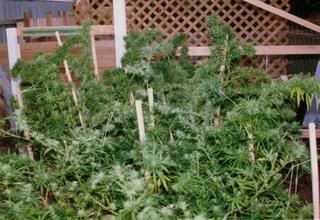budchopper
Active member
kc33
kc33
thanks for info on what sounds like another good kc strain i personally like kc
mango..my question is when planted sideways and you get higher yield ,do you think plants take longer to mature?
kc33
silverback said:Thanx phrank, good to see ya
Hi everyone.
Yes Hindu Killer, it is almost the same and Ive tried that. I discovered that the plants didn't adjust as well and the delay seen in growth while rooting occured was more pronounced.
Plants do get large this way, even smaller stature plants
I had a KC 33 plant, which gets very big and is vigoruous to start with, spread over 13 feet X 9'. I harvested over 4 lbs from it.
Ive used this practice so much I have a formula for yeild. Its simple. Each branch that is exposed will produce 50-70% of what the original plant would have produced. For example, if a plant normally produced 6 oz grown untopped or minimal topping, then each branchs sticking up from your rooted stem will produce around 4 oz. You can usually get at least 4 branches sticking up, so the total yeild from this plant would be 16 oz, where it would have originally yeilded 6. Its a better way to plant. No negative effects to the plant.
The original rootball of the plant keeps it growing until the entire stem roots. Once that happens you will know it as behavior of the branches becomes different - you cant miss it. I have never lost a plant doing this. Never. Ive never had one that didn't root, although the pace of rooting matches the cloning capacity of any given strain. Most strains clone easily, but ocassionally you run into strains that doesnt and that lack of acceptance is seen with this as well.
thanks for info on what sounds like another good kc strain i personally like kc
mango..my question is when planted sideways and you get higher yield ,do you think plants take longer to mature?








